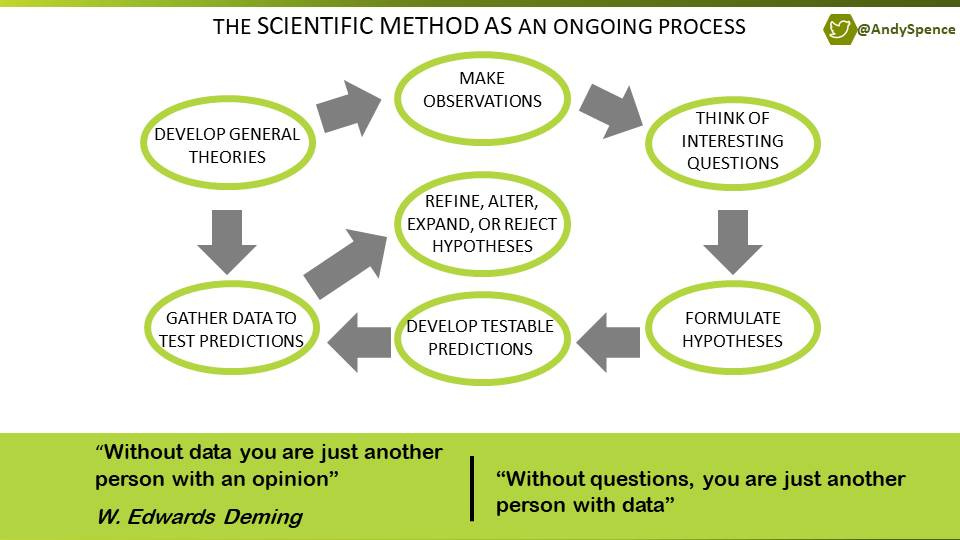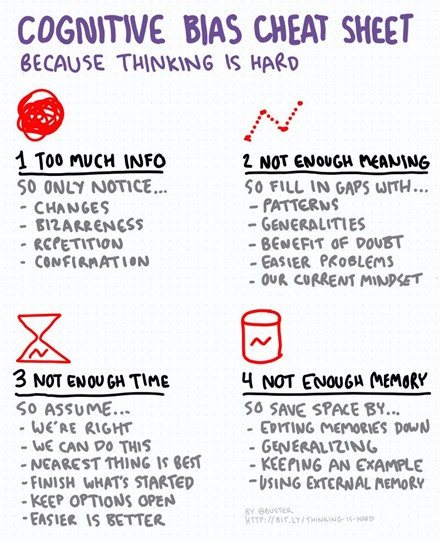Don’t Be Just Another Person With Data
#WF25 Making better organisational decisions – asking big questions, cognitive bias, the rise of people analytics and enabling smarter teams

Today’s Workforce Futurist is brought to you by…Visier
I have spoken to HR audiences recently about an increasingly important role as the People Scientists in organisations. We have a great opportunity with technology and workforce data to solve business problems. Visier is the market leader in Workforce Analytics, a cloud-based analytics application that delivers fast, clear people insight. Their clients include 1 in 3 of the Fortune 500 from BASF to Panasonic and Experian. You can sign-up for their webinar ‘New Leadership Imperatives in an Evolving World of Work’ on January 26th by clicking the button below.
Data, Data, Everywhere
Data, data, everywhere,
Nor any time to think.
From the moment we wake up, we are swimming in data.
Before we get out of bed, our phones have updated us on:-
the WhatsApp-group mini-drama, the weather forecast, the curt email from the boss.
Before we have even put the kettle on - we have decisions to make,
Should I send a message of faux-outrage?
Should I wear a coat walking the dog?
Should I email or call the boss?
We have access to SO much data.
For example, we can see public transport usage in London today (see chart below). This includes data from Google’s Community Mobility Reports - which publishes anonymised data on people’s physical movements from smartphones - showing visits to the park or train stations.
This data revolution promises to make personal, organisational and economic decisions better, but there are some challenges.
Does More Data Lead to Better Decisions?
Our Daily News bombards us with Covid data.
Should we vaccinate? Should we lockdown? Who do we let in where?
Our entertainment includes watching public officials grappling with scientists and elected politicians. It seems that matters of epistemology have become the global topic of conversation.
Making the right decisions that impact people is challenging, especially when determining cause-and-effect relationships from data is so difficult.
I give two examples to illustrate, one from sport, and one from a large organisation.
Sir Clive Woodward, a winning rugby coach, tells the story of when they first gave players tracking devices to map their movements during a game. The players were fascinated with the results. For the first time they could see their actual stats on kicks, distance covered etc. In the first few weeks, the players picked out metrics that caught their eye - ‘I am covering less distance than my team average - therefore I need to run more’. Which didn’t necessarily help the team. Performance only improved after sessions with skilled coaches.
Another example, of using performance data in organisations comes from the pharmaceuticals industry. A CHRO told me that the first time they showed the results of the initial ONA (Organisational Network Analysis) to executives, they were blown away.
For the very first time they could see their organisation in a rich visual format, a leap beyond the powerpoint org charts or spreadsheet tables. However, sometimes, the team simply used the results from the ONA to reinforce their own views,
“ look at that yellow cluster, I knew that the Boston team were damn lazy – sack the lot of them! “
This is an example of Confirmation Bias. The team were eventually coached on how to interpret ONA results, when to take actions, and importantly when to just monitor.
Data is everywhere, but it’s only one part of improving decisions.
Just Another Person With Data
“Without data you are just another person with an opinion”
W. Edwards Deming – Engineer and Statistician
Social scientists tend to know a bit about the theory of science.
The scientific method is broad enough to design cars and study humans.
However, when dealing with the behaviour of us lovely, inconsistent, humans, sometimes demonstrating you are a PROPER scientist 👩🔬 is a big deal.
To make better decisions, a science refresh can be helpful.
To make better decisions and to solve complex organisational problems, data is essential.
But without the right questions you are just another person with data.
Thinking Fast, Reading Slow
Our brains🧠 evolved for a more rural existence - picking berries, gathering nuts, killing the occasional predator.
Fast forward a few millennia, and we have pretty much the same navigation equipment to chat on WhatsApp, watch TikTok and queue in the supermarket.
Our world has too much information for our little brains to process.
Thankfully, we have learned to take short-cuts.
Some of you will have started reading ‘Thinking, Fast and Slow’ by Daniel Kahneman. A book that summarise a life-time of Nobel prize-winning research on judgement and decision-making. I say started reading, because apparently, it’s one of the most unread bestsellers - a book that many start but don’t finish.
For those of you who that didn’t finish the book, and in the spirit of cerebral short-cuts, I have found this article and diagram useful.
Cognitive bias cheat sheet, simplified by Buster Benson
📬 Get future issues of Workforce Futurist Newsletter delivered direct to your inbox every two weeks, just enter your email here:
From Big Questions to Better Organisational Decisions
Avoiding noise in judgment is not something individuals are very good at. I really put my faith, if there is any faith to be placed, in organisations. Daniel Kahneman
To solve complex organisational problems, we need :-
access to good quality data
the right skills and experience to intepret the data
awareness of our cognitive biases
ability to ask the right questions
We need to avoid the noise and focus on the Questions we need to solve.
Which Organisational Questions are you grappling with?
How do we increase team productivity in the southern region shops?
How do we attract more women into our technology teams?
Where should our workforce be located?
How do we reduce costly attrition in our sales team?
Which workforce systems should we use?
In recent years, we have seen the success of People Analytics teams and technology in our organisations to answer these types of questions.
The Rise of People Analytics
People Analytics was born from disparate talent pools of Organisational Psychologists, an influx of new PhDs joining the HR profession, some dusty consulting powerpoint decks, and a few big data software licenses.
Which organisations have been successful with People Analytics?
Companies that have been successful in recent years will have a competent People Analytics function. The pandemic has brought effective workforce problem solvers into the middle of most executive discussions. To solve workforce problems in large, complex organisations - you need to have a team that can handle strategic analysis, use data from disperate sources and enable teams to make better decisions.
Focus on the right questions and critically assess the best available evidence before making decisions. (here is a useful resource for more evidence-based management resources)
In 2017, I highlighted Seven Challenges that People Analytics Must Overcome, including:- an industry preference for ‘gut feelings’ for making people-related decisions, needing the right tools for the job, and some flimsy underlying frameworks. I might come back to where we are today, but would be interested in your views.
Looking forward, successful organisations will need to provide self-organised teams with the data, software and expertise to make better business decisions. A central role that remains would include, compliance, effectiveness and nurturing talent pools.
For those interested in reading more about People Analytics, I will point you towards three excellent resources :-
The Best HR and People Analytics Articles of 2021 by David Green - hot off the press, David has assembled some great examples of the state of People Analytics. From helping make decisions about the location of work, from Merck, Facebook, and increasing team collaboration.
Visier’s Diversity and Inclusion Framework. An example of how one company approaches D&I, with an honest and open description of the challenges, and principles, standards and procedures. From Paul Rubenstein, the Chief People Officer at Visier.
Data-Driven Retention Strategy in the Era of the Great Resignation - a practical consideration of developing a retention strategy that works from Serena Huang - Head of People Analytics at PayPal. Using data to seperate noise from facts, listening to employees continuously and focussing on proactive retention.
Finally, in 2022 - don’t get submerged in a data lake.
Work out what actions you will take to make better decisions.
You might enjoy my Workforce Futurist Roundup post for 2021, find out :-
which were the most popular articles, the rapidly swirling mega-trends, if any tweets suprassed my Sheep-Pig tweet of 2005, and other useful knowledge nodes…
There are now 57 articles, videos, and podcasts in the Workforce Futurist Library that you can access for free, and I hope you find them valuable.
In return I ask you to consider subscribing and sharing with your network so that I can build a stronger network and contribute more to this fascinating area in 2022.











